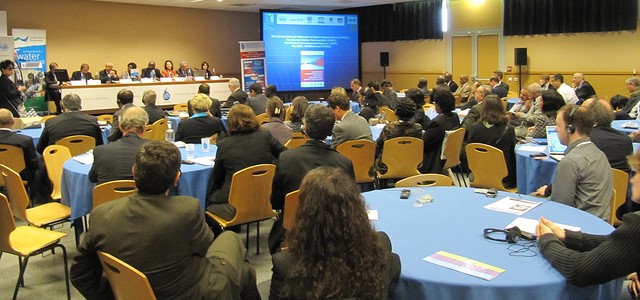Characteristics
Transboundary organisations provide a framework for coordinating and facilitating the management of water resources across international boundaries, where there are issues about the management of common (cross-jurisdiction) property resources. Such organisations differ in type and function according to the political context, the water resources challenges, and the cultural features of the area.
The type of agreement underlying these organisations varies greatly around the world, from ad hoc arrangements, memoranda of understanding, to formal international treaties and agreements. They are most often based on voluntary agreements between sovereign states, but may include international and intra-national water authorities and commissions. It is clear that the effective functioning of transboundary organisations requires a secure funding base, the political will of governments, and the commitment of the partners who create them. Many donors are keen to financially support the international committees when firm and transparent agreements among riparian countries are in place.
Traditionally, international organisations have been set up to address a given problem (e.g. navigation, sedimentation) but their remit can be, and often has been, expanded to tackle wider water problems in the basin. Some of its recognized functions include join monitoring, flood protection, accident alarm system. An IWRM approach requires that human resources and institutional capacity in transboundary structures are able to address social issues, as well as environmental and economic development imperatives. While governments in each country often wish to retain ultimate responsibility for decisions, it can be helpful to establish some kind of consultative body to broaden the range of stakeholder involvement. This is important in course of developing, for instance, climate change adaptation and mitigation strategies.
To develop the essential confidence to enable transboundary water resource management and collaboration, parties need to build and accept common data sets and knowledge about the water resource issues (C1; C2) and share visions (C5.03) about the future of the resource. However, different countries view water bodies in different ways and getting to a shared vision is exactly where the bulk of the challenge resides. Experience shows that transboundary cooperation becomes especially complicated and sensitive when dealing with issues of large scale national infrastructure projects, such as irrigation schemes, hydroelectric dams, and bridge constructions. The very nature of such projects can have drastic impacts on the shared body of water and thus may cause severe environmental and socio-economic disruption in other riparian countries. In those cases, transboundary organisations for water resource management have shown to be one of the best possible platforms for honest and active mediation.
Lessons learned
- Establishing the conditions for agreement can be time-consuming and costly in terms of money and resources (e.g. brokers and negotiators to build confidence). Donor support can be helpful here.
- The use of respected external parties or organisations to act as honest brokers is useful only when political will of riparian countries is in place.
- National water policy needs to support inter-agency co-ordination for the transboundary organisation and may need to be modified to align with the other parties to the agreement.
- Once established, transboundary water management needs to move beyond visions, and develop specific regulatory mechanisms, data and information sharing protocols, and financing mechanisms to put transboundary water management firmly on the ground. Experience shows that technical secretariats are essential in this respect.
- Once established, transboundary organisations and water agreements are remarkably robust – contrary to popular belief, they often act as a moderating factor within a conflict situation.

